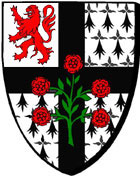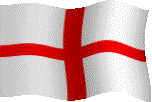
Encyclopédie Marikavel-Jean-Claude-EVEN/Encyclopaedia/Enciclopedia/Enzyklopädie/egkuklopaideia
 |
|||

England Bro Saoz |
Chesterholm Vindolanda |

Northumberland *** |
| pajenn bet digoret ar 15.02.2006 | page ouverte le 15.02.2006 |
* forum du site Marikavel : Academia Celtica |
dernière mise à jour 11/08/2025 15:26:22 |
![]()
|
Définition / Displegadur : Site d'Angleterre; comté de Northumberland. Autrefois la forteresse romaine Vindolanda, sur le territoire des Brigantes, à 3 km au sud du Mur d'Hadrien. |
|
![]()
|
Extraits de la carte Map of Roman Britain, par Ordnance Survey |
![]()
| Histoire. Istor
* Notitia Dignitatum XL41 : Tribunus cohortis quartae gallorum, VINDOLANA / Tribun de la quatrième cohorte gauloise. |
![]()
|
i
Vue satellitaire du site global de Vindolanda, avec les bains en arrière-plan Image provenant de Google Earth |
|
i
Vue générale du camp de Vindolanda, avec les bains en arrière-plan Image provenant de Wikipedia. Contributeur Phil Champion |
Pour l'archéologie, voir les liens donnés ci-dessous en bibliographie, et qui sont richement documentés
![]()
|
Étymologie / Gerdarzh : A. Vindolanda : * Rivet & Smith, p. 502 : Sources : - Inscription : RIB 1700 ( = Burn, 1969, N° 172, p. 125), an altar dedicated by the VICANI VINDOLANDESSES (late second or early third century), found at Chesterholm - Ravenna 10712 ( = R&C 132) : VINDQLANDE. - ND XL41 : Tribunus cohortis quartae Gallorum; VINDOLANA For the Vulgar Latin assimilation -ns- > -ss- in the inscription, compare RIB 1905 under BANNA. Ravenna's entry might show V.L -e for -ae, locative, but this case does not appear in its records of Hadrian's Wall forts having singular form, an the -e is probably a simple miscopying of -a. ND's form in -lana might just show V.L assimilation of -nd- > -nn-, of which sporadic instances are known in Imperial times in some regions, including Britain; the assimilation could not be a British one, for this did not occur until the end of the fifth century (Jackson). DERIVATION. For *uindo-, see VINDOBALA. British *landa may have meant originally, if the Gaulish equivalent is a guide, `terrain plat, peu fertile, couvert de broussailles et de plantes sauvages' (RIO, IX (I957), 35), a sense which survives in French lande `heath' and the well-known Les Landes. The Welsh and Breton derivatives, llan (Irish land), etc., have senses which have evidently evolved via `rough meadow' > 'small enclosed meadow' > 'enclosure' > 'churchyard, church, monastery'. The complete name is unlikely ta have had a sense 'white' in it, but was perhaps 'bright moor' (with heather in flower?) or 'fair moor'. IDENTIFICATION. The Roman fort at Chesterholm, Northumberland (NY 7766), garrisoned in the third century by Cohors IIII Gallorum (RIB I68S-I688, I705-I706, I7I0). Note. Vindolanda vicus may have continued, or replaced, a native Curia Tectoverdorum. See the entry for this. ************ B. Chesterholm : Nos auteurs britanniques de référence concernant la toponymie 'anglaise', Ekwall ni Mills, n'ont pas traité ce nom. Nous proposons donc, à partir de toponymie camparée : *ceaster = fort, camp (romain) + *holme : île, péninsule, isthme, à partir de la racine en Vieux-scandinave : *holmr, pour désigner un camp bâti sur une langue de terre entourée d'eau. |
![]()
| Sources; bibliographie / Eien; Levrlennadur :
* Eilert EKWALL : The Concise Oxford Dictionary of English Place-names. Clarendon Press. Oxford. 1936 - 1980 (4è édition). * Ordnance Survey : Map of Roman Britain. 1956. * A.LF. RIVET & Colin SMITH : The Place-names of Roman Britain. Batsford Ltd. London. 1979-1982. * A.D MILLS : Oxford Dictionary of British Place Names. Oxford University Press. 1991-2003 |
![]()
|
Liens électroniques des sites Internet traitant de Chesterholm / Vindolanda : * Site communal : * Wikipédia anglais / français : Vindolanda — Wikipédia - Mur Hadrien - Vindolanda - Human-Hist - Vindolanda: La frontière romaine en Bretagne - Revue Histoire, Idées, Sociétés - UQAM - Visite de Vindolanda et du musée de l’armée romaine - Mur de Vindolanda (Chesterholm) | Visitez Northumberland - Fort romain de Vindolanda - Mur d’Hadrien - Principalement des musées - Le musée de Chesterholm et Vindolanda - etc ... * Wikipedia brezhonek : non alimenté * forum du site Marikavel : Academia Celtica * Autres pages de l'encyclopédie Marikavel.org pouvant être liées à la présente : http://marikavel.org/heraldique/bretagne-familles/accueil.htm http://marikavel.org/broceliande/broceliande.htm * solidarité nationale bretonne avec le département de Loire Atlantique : Loire-Atlantique * sauf indication contraire, l'ensemble des blasons figurant sur cette page ont été dessinés par J.C Even, sur bases de GenHerald 5. * Introduction musicale de cette page : Bro Goz Ma Zadoù, hymne national breton, au lien direct : http://limaillet.free.fr/MP3s/BroGoz.mp3 hast buan, ma mignonig, karantez vras am eus evidout go fast, my little friend, I love you very much |
![]()